Adding an Exit for a Client from a Program
Introduction
When a client ceases participating in a program, update the Entry/Exit that was created when they were first engaged. This action is referred to as "exiting a client" or "closing an Entry/Exit".

Data Entry Steps
- Add Exit Data. Document when a client's participation ended by recording an Exit Date and where they will be residing by selecting a Destination.
- Complete the Exit Assessment. Update a client's assessment to capture their status at the time of program exit.
Add Exit Data
Document when a client's participation ended by recording an Exit Date and where they will be residing by selecting a Destination.
- Click on Enter Data As and select the provider that is exiting the client. In most cases, this will be the provider named in the Program field, but there are exceptions to that rule: For example, when a housing provider removes a client from a region's Priority List.
PLEASE NOTE: Skipping this step or choosing the wrong data entry provider can prevent you from locating client records or saving exit data with the proper level of visibility.
- Open the client's record in ClientPoint. When the Back Date Mode pop-up appears, select Use Current System Date.
- Go to the Entry/Exit tab and find the client's program enrollment. Click on the edit pencil next to the blank Exit Date field to open a pop-up window.
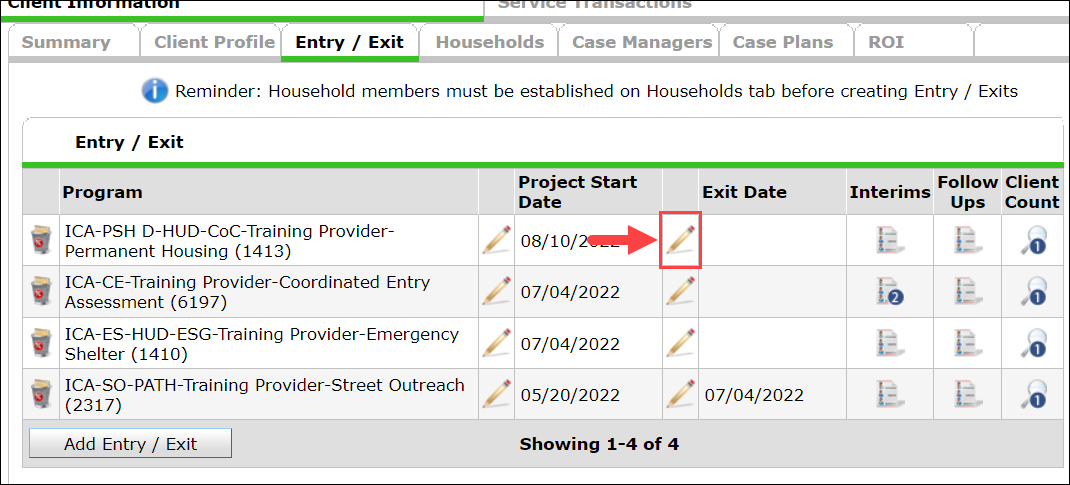
- Make the following updates in the Edit Exit Date window:
- HOUSEHOLD MEMBERS: Check the box next to the name of every household member exiting the program.
- EXIT DATE: Enter the date that the client exited the program. Check out HUD's HMIS Data Standards for more information about what Project Exit means for different project types.
- DESTINATION: Select the answer that most accurately describes where the client will be staying after exiting the program.
 Other fields found in the Edit Exit Data window, like Reason for Leaving, do not need to be filled out unless ICA, your funder, or another trusted entity instructs you otherwise.
Other fields found in the Edit Exit Data window, like Reason for Leaving, do not need to be filled out unless ICA, your funder, or another trusted entity instructs you otherwise. - Click on Save & Continue to proceed to the exit assessment.
Complete the Exit Assessment
Update a client's assessment to capture their status at the time of program exit.
- Fill out the exit assessment as accurately and completely as possible, paying special attention to the following:
- HELPER TEXT: Check section headers for information about the data being collected, including guidance on which clients require an answer to be entered.
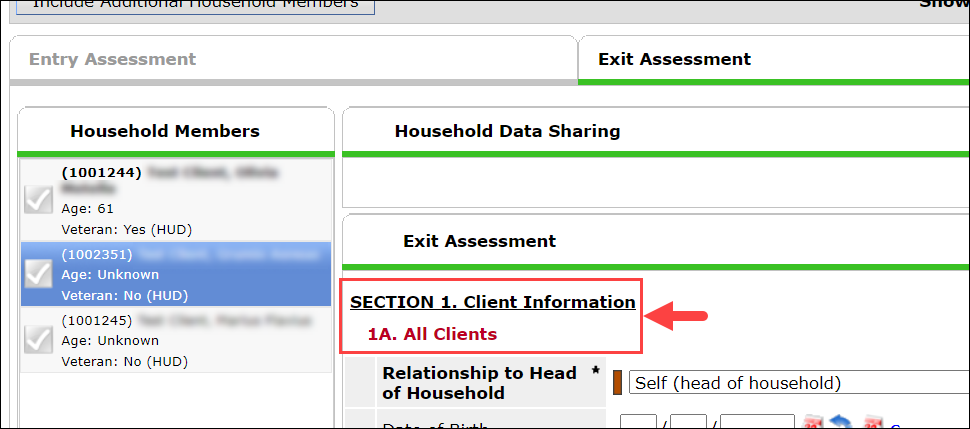
- EXISTING INFORMATION: Data collected by your agency and others that have worked with the client will be visible in the exit assessment. Review any existing assessment data and update information that is no longer accurate.
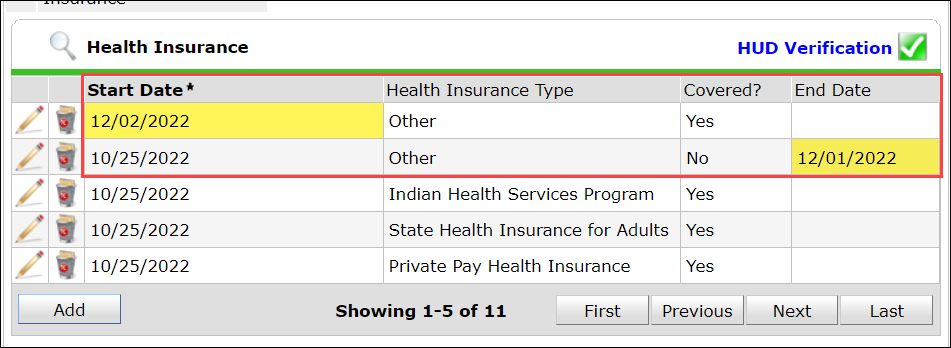 Screenshot: When updating a sub-assessment that already contains information, indicate that a row is outdated by entering an End Date. That End Date should be the day prior to your row's Start Date.
Screenshot: When updating a sub-assessment that already contains information, indicate that a row is outdated by entering an End Date. That End Date should be the day prior to your row's Start Date. - HOUSEHOLD MEMBERS: Switch to another household member's assessment by selecting the client's name in the Household Members menu. Your program's assessment may have questions that need to be answered for specific household members.
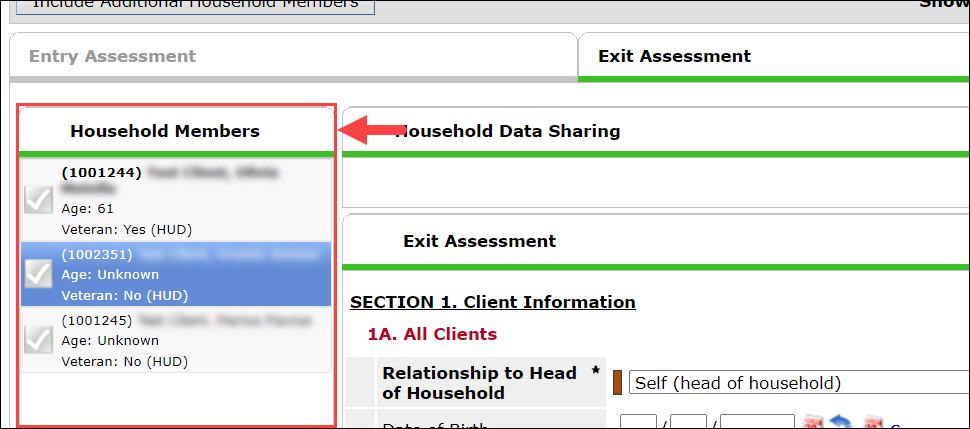
- NO ASSIGNED ASSESSMENT: If instead of assessment questions you see the message "No exit assessment has been specified for this provider", the incorrect entry type was selected when the Entry/Exit was created. See the article Changing a Provider Entry Type for instructions on correcting this issue.
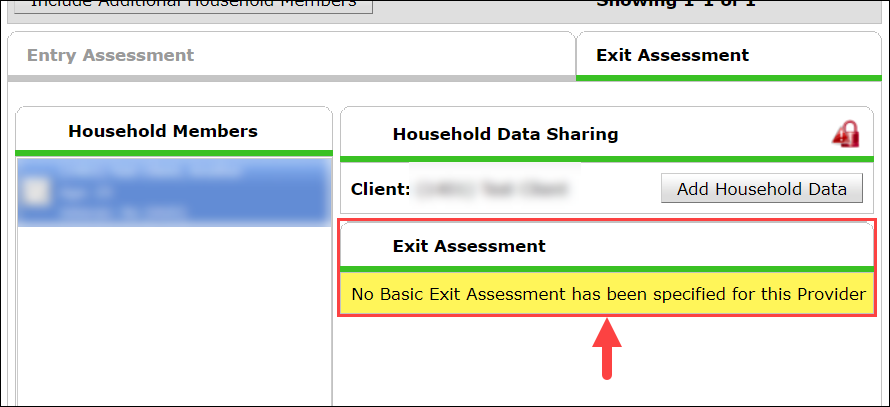
- HELPER TEXT: Check section headers for information about the data being collected, including guidance on which clients require an answer to be entered.
- Select Save & Exit at the bottom of the assessment when you are finished entering data.
PLEASE NOTE: Unless explicitly directed to by ICA, you should never select Verify and Save Data. While Save and Save & Exit will save only any new data you've entered, Verify and Save Data will create copies of previously entered answers, which can make it difficult to understand a client's situation and can cause errors to appear on reports.






